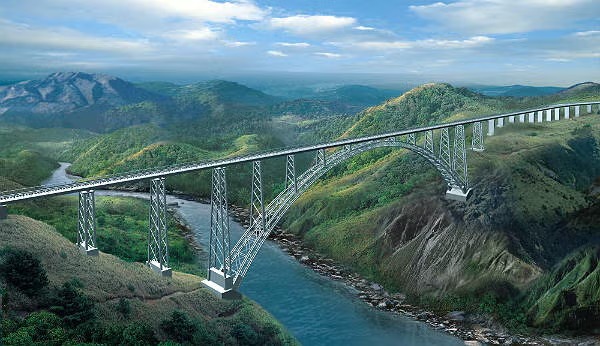The Prime Minister of India, Shri Narendra Modi inaugurated the world’s highest single-arch railway bridge in Kashmir. The term “single-arch bridge” typically refers to a bridge with a single, continuous arch spanning between two supports.
An Architectural Milestone
The Chenab Rail Bridge is 359 metres above the Chenab River in Jammu and Kashmir. It is the tallest railway bridge in the world and surpasses the Eiffel Tower. It is a crucial link between the Kashmir Valley and the rest of the country. Chenab Rail Bridge represents more than just an engineering feat as it promises transformation of the region that has been long isolated by terrain, weather and conflict. The bridge will connect the valley region of Kashmir with the rest of the country by train for the very first time. The massive infrastructure project, which is built over the Chenab river, is 35m (114ft) and took the Indian Railways more than 20 years to build. It is part of a 272km (169 miles) all-weather railway line that will pass through Jammu, ultimately going all the way to the Kashmir valley.

Connecting Kashmir to the rest of India
There was no such bridge in the country to serve as an example for the team that built the Chenab Bridge. The steel arch of the bridge required innovation at every stage. Engineers behind the bridge adopted a design-as-you-go approach to deal with the unstable Himalayan geology. The bridge has been built using 63-mm-thick steel which is blast resistant and concrete piers. The bridge is capable of withstanding earthquakes, high-velocity winds and sabotage.
For over two decades, the region waited for better transport infrastructure. The bridge, which is a critical part of the Rs 35,000 crore USBRL project, will provide better accessibility to remote villages that were only reachable via foot or boat. Around 70 villages will benefit from the 2,015 km approach road and will open avenues for economic activity, education and healthcare.
In addition to the Chenab Bridge, PM Modi also inaugurated the Udhampur-Srinagar-Baramulla Rail Link project, which connects key cities in Kashmir to the rest of India. For Modi government, investments in infrastructure like the Chenab Bridge and the broader rail link project can be seen as a powerful tool for social integration and political influence. Since 2014, the Modi government has rapidly expanded the region’s road and rail connectivity, building networks that connect disparate towns with major cities.
In 2019, New Delhi revoked a constitutional provision giving Kashmir the autonomy to set its own laws. The southern and eastern portions of the region known previously as the Indian state of Jammu and Kashmir became two separate union territories, bringing them under direct control of New Delhi – a move PM Modi claimed would promote stability, reduce corruption and boost the economy.
Marching Towards a Developed Nation by 2047
The Chenab Bridge is being hailed as a major win for the Modi government. His administration has poured billions into upgrading India’s old and outdated transport network, part of its vision to transform the country into a developed nation by 2047. Among these ambitious projects is the construction of several tunnels and highways in the mountainous Himalayan region which has been criticized by some environmentalists who say the heavy construction could damage fragile topography already feeling the effects from the climate crisis.
In an era where infrastructure defines a nation’s global standing, India’s engineering marvels are no longer just headlines but life-changing realities. From the newly inaugurated world’s highest railway bridge, the Chenab Rail Bridge in Jammu and Kashmir, to the vertical-lift Pamban Railway Sea Bridge in Tamil Nadu, these ambitious projects are not only transforming landscapes but connecting lives. Whether it is easing commutes, boosting tourism, or asserting strategic presence, India’s mega infrastructure push is scripting a new chapter of national development.